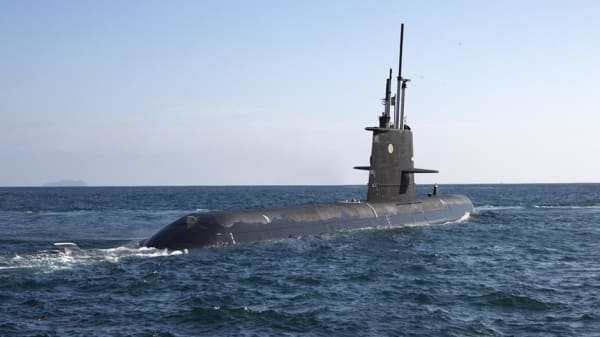The secret to the world´s most silent submarine
The ability to be under water is essential for a submarines safety and capacity. You don't want to surface if not necessary. Submarines with ordinary diesel engines and battery power must surface and recharge their batteries with noisy diesel engines after a number of days – but with a Stirling engine that is not necessary.

It all began with a water pump
In the year 1840 the foundation was laid for Kockums. At about the same time a Scottish clergyman named Robert Stirling obtained a patent on a heat engine, which could be used to pump water out of mine shafts. The advantage of the engine was that the combustion chamber and the cylinders were separated, so that virtually any type of fuel could be used.
Since then, for over five decades, Sweden has been involved in the research and further development of Stirling engines and in 1988 the first installation of a Stirling engine in a submarine took place, it was in the Royal Swedish Navy submarine HMS Näcken.
HMS Näcken was placed in dry-dock and cut in two. A fully outfitted eight-meter AIP section was then inserted. The years of practical sea-trials that followed were extremely satisfactory and resulted in the installation of Stirling AIP systems in the new Swedish Gotland Class submarines.
How it works
With the Kockums Stirling AIP system the submarine does not have to surface to charge the batteries and thus increases the submerged endurance from days to weeks. It does not need air as other engines do.
"The Stirling engine is quiet and vibration free. No vibrations spread out to the hull making the submarine silent in the water and therefore difficult to find. This technology is unique to Swedish submarines" remarks Sebastian Lenander, Manager, Assembly and Testing Stirling, Saab Kockums.
By heating and cooling the gas in a Stirling engine, the piston can move in a cylinder. The submarine can then use cold seawater for cooling and liquid oxygen and diesel to create the heating of the engine. This could be any heat source whatsoever; waste heat from the process industry, solar heat or other forms.
"The way in which we have solved the relationship between cold and heat and sources is what makes the Swedish Stirling engine one of the most unique in the world," continued Sebastian.
The Stirling engine is an excellent example of advanced Swedish innovation at its best. It is a high-tech solution, which is far ahead of other manufacturer's air-independent systems. Saab Kockums have worked with many improvements on the system over the last few years. Today the Stirling engine is used on Swedish submarines in classes Gotland and Södermanland.

Source: Wikipedia. Graphic showing the functioning of a Stirling engine. Red indicates high temperature and blue indicates low temperature. Working together these elements provides functionally to the Stirling engine.